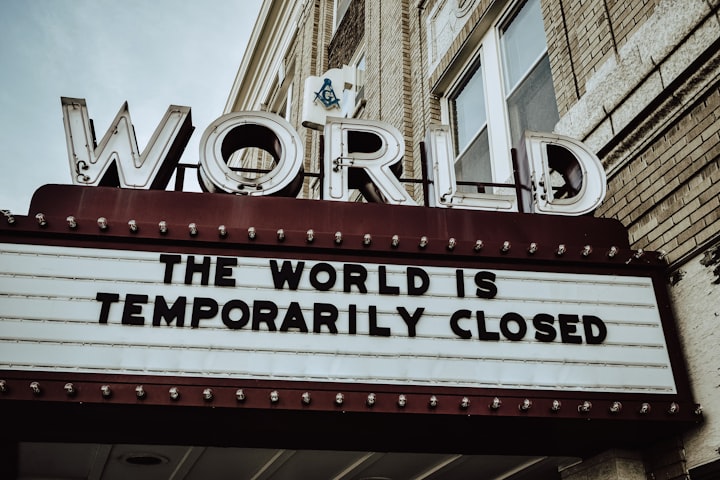
The Black death.
The 1918 Flu Pandemic.
COVID-19.
We generally tend to think of those catastrophic, world-converting pandemics
as not possible events.
but among 1980 and 2020,
at least three diseases emerged that precipitated international pandemics.
COVID-19, yes, but also the 2009 swine flu and HIV/AIDS.
disorder outbreaks are rather common.
over the past 4 centuries,
the longest stretch of time without a documented outbreak
that killed at least 10,000 human beings turned into just 4 years.
As awful as these smaller outbreaks are,
they’re far less deadly than a COVID-19-stage pandemic.
In fact, many people born after the 1918 flu lived their complete lives
with out experiencing a comparable global-converting pandemic.
What’s the opportunity that you do, too?
There are several approaches to answer this query.
you may have a look at records.
A crew of scientists and engineers who took this method
catalogued all documented epidemics and pandemics among 1600 and 1950.
They used that facts to do matters.
First, to graph the chance that a deadly disease of any size
pops up somewhere in the global over a fixed time frame.
And 2nd, to estimate the likelihood that that outbreak could get big sufficient
to kill a positive percentage of the sector's population.
This graph suggests that whilst large pandemics are unlikely,
they are not that unlikely.
The team used those distributions to estimate that the danger
of a COVID-19-degree pandemic is ready 0.5% according to 12 months,
and will be as high as 1.four%
if new sicknesses emerge extra frequently within the destiny.
And we’ll come back to those numbers,
however first, permit’s take a look at every other way to estimate the chance
of a future pandemic:
modeling one from the floor up.
For maximum pandemics to show up, a pathogen, that is a microbe which could cause ailment,
has to spill over from its ordinary host with the aid of making touch with and infecting a human.
Then, the pathogen has to spread widely,
crossing global boundaries and infecting masses of people.
Many variables decide whether or not a given spillover occasion will become a deadly disease.
for instance, the form of pathogen, how often human beings come into near touch
with its animal reservoir, present immunity, and so forth.
Viruses are prime candidates to cause the following big pandemic.
Scientists estimate that there are approximately 1.7 million as-but-undiscovered viruses
that presently infect mammals and birds,
and that more or less forty% of these have the ability to spill over and infect human beings.
A group of scientists built a version the usage of this records,
as well as records about the global population, air travel networks,
how humans move around in groups, united states of america preparedness stages,
and how human beings would possibly respond to pandemics.
The model generated loads of thousands of digital pandemics.
The scientists then used this catalog to estimate
that the probability of some other COVID-19-level pandemic
is 2.5 to three.3% per 12 months.
To get a sense of how those dangers play out over an entire life,
allow’s pick a fee more or less within the middle of a majority of these estimates: 2%.
Now allow’s build what’s referred to as a probability tree diagram
to model all viable eventualities.
the first department of the tree represents the primary year:
there’s a 2% probability of experiencing a COVID-19-stage pandemic,
this means that there’s a 98% probability of now not experiencing one.
2d branch, equal factor,
third branch, identical.
and so on, seventy two extra instances.
there may be most effective one course that consequences in a totally pandemic-unfastened lifetime:
98%, or 0.ninety eight, multiplied via itself seventy five times,
which comes out to more or less 22%.
So the chance of living through at the least one more COVID 19-stage-pandemic
inside the subsequent 75 years is 100 minus 22%, or 78%.
78%!
If we use the maximum positive yearly estimate— 0.five%—
the lifetime chance drops to 31%.
If we use the most pessimistic one, it jumps to 92%.
Even 31% is too excessive to disregard;
although we get fortunate, destiny generations may not.
also, pandemics are usually random, impartial occasions:
so even supposing the yearly opportunity of a COVID-19-level pandemic is 1%,
we should simply get some other one in ten years.
the best information is we now have tools that make pandemics less unfavourable.
Scientists estimated that early warning systems, contact tracing,
social distancing, and different public health measures
stored over 1,000,000 lives in only the first six months
of the COVID-19 pandemic within the US,
not to mention the tens of millions of lives saved through vaccines.
in the future, every other pandemic will sweep the globe.
but we can work to make that day less in all likelihood to be the following day.
we will reduce the danger of spillover activities,
and we are able to include spillovers that do happen
in order that they don’t turn out to be complete-blown pandemics.
believe how the future might look if we interacted
with the animal world extra carefully,
and if we had properly-funded, open-get admission to international disease tracking packages,
AI-powered contact tracing and isolation measures,
widely wide-spread vaccines, subsequent-era antiviral drugs,
and other tech we haven't even idea of.
It’s in our strength to trade those possibilities.
So, we've got a desire: we ought to do not anything and hope we get lucky.
Or we could take the chance seriously enough
that it turns into a self-defeating prophecy.
Which destiny would you as an alternative stay in?
About the Creator
Enjoyed the story? Support the Creator.
Subscribe for free to receive all their stories in your feed. You could also pledge your support or give them a one-off tip, letting them know you appreciate their work.





Comments
There are no comments for this story
Be the first to respond and start the conversation.